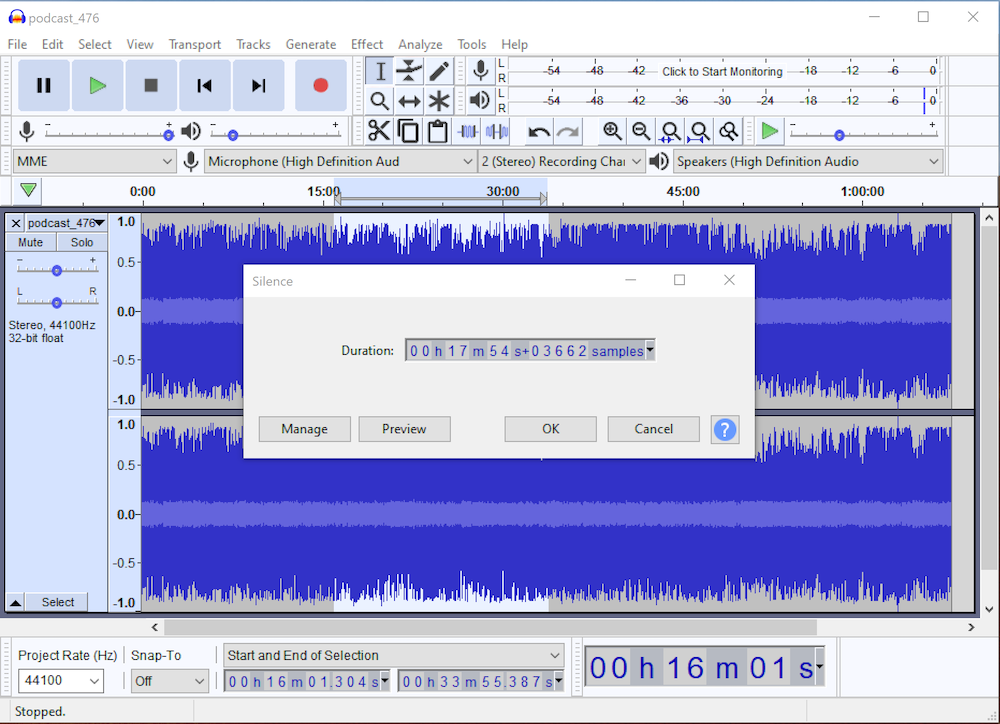
But if there is any additional audio before the buffer, go ahead and delete it. In a case like this, you should include this three-second segment of ambient audio in the final sound file that you upload to eBird.

Looking at the waveform of this recording, we see that the three seconds that are highlighted are “clean audio,” with no recordist noise or prominent, potentially confusing background species. The first step is to find where the first sound from the target species occurs and highlight the three seconds immediately before that sound: Below is a single sound file, without any pauses, with six songs from a White-crowned Sparrow: If you have a single sound recording that you’d like to upload to an eBird checklist, it can be prepared in just a few easy steps.

Continue on for a step-by-step demonstration of how to edit recordings for upload. Audacity is a free sound editing software that works well for editing audio recordings for submission to eBird and the Macaulay Library, although it lacks several features found in Audition and Wavelab, such as dual viewing of waveforms and spectrograms and smooth filtering.


 0 kommentar(er)
0 kommentar(er)
